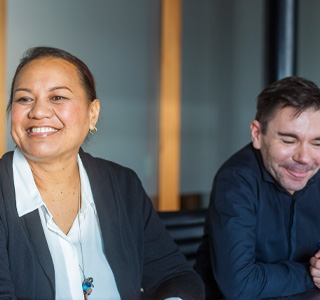-
Business valuations
We offer expert valuation advice in transactions, regulatory and administrative matters, and matters subject to dispute – valuing businesses, shares and intangible assets in a wide range of industries.
-
Capital markets
You need corporate finance specialists experienced in international capital markets on your side if you’re buying or selling financial securities.
-
Complex and international services
Our experience of multi-jurisdictional insolvencies coupled with our international reputation allows us to deliver the best possible outcome for all stakeholders.
-
Corporate insolvency
Our corporate investigation and recovery teams can help you manage insolvency situations and facilitate the best outcome.
-
Debt advisory
An optimal funding structure for your organisation presents unprecedented opportunities, but achieving this can be difficult without a trusted advisor.
-
Expert witness
Our expert witnesses analyse, interpret, summarise and present complex financial and business-related issues which are understandable and properly supported.
-
Financial models
A sound financial model will help you understand the impact of your decisions before you make them. Talk to us about our user-friendly models.
-
Forensic and investigation services
We provide investigative accounting and litigation support services for commercial, matrimonial, criminal, business valuation and insurance disputes.
-
Independent business review
Is your business viable? Will it remain viable in the future? A thorough independent business review can help your organisation answer these fundamental questions.
-
IT forensics
Effective ESI analysis is integral to the success of your business. Our IT forensics experts have the technical expertise to identify, preserve and interrogate electronic data.
-
Mergers and acquisitions
Grant Thornton provides strategic and execution support for mergers, acquisitions, sales and fundraising.
-
Raising finance
Raising finance - funders value partners who can deliver a robust financial model, a sound business strategy and rigorous planning. We can guide you through the challenges that these transactions can pose and help you build a foundation for long term success once the deal is done.
-
Relationship property services
Grant Thornton offers high quality independent advice on the many financial issues associated with relationship property from considering an individual financial issue to all aspects of a complex settlement.
-
Restructuring and turnaround
Grant Thornton’s restructuring and turnaround service capabilities include cash flow, liquidity management and forecasting; crisis and interim management; financial advisory services to companies and parties in transition and distress
-
Transaction advisory
Our depth of market knowledge will steer you through the transaction process. Grant Thornton’s dynamic teams offer range of financial, commercial and operational expertise.
-
Corporate tax
Grant Thornton can identify tax issues, risks and opportunities in your organisation and implement strategies to improve your bottom line.
-
Employment tax
Grant Thornton’s advisers can help you with PAYE (payroll tax), Kiwisaver, fringe benefits tax (FBT), student loans, global mobility services, international tax
-
Global mobility services
Our team can help expatriates and their employers deal with tax and employment matters both in New Zealand and overseas. With the correct planning advice, employee allowances and benefits may be structured to avoid double taxation and achieve tax savings.
-
GST
GST has the potential to become a minefield and can be expensive when it goes wrong. Our technical knowledge can help you minimise the negative impact of GST
-
International tax
International tax rules are undergoing their biggest change in a generation. Tax authorities around the world are increasingly vigilant, especially when it comes to global operations.
-
Research and Development
R&D tax incentives are often underused and misunderstood – is your business maximising opportunities for making claims?
-
Tax compliance
Our advisers help clients manage the critical issue of compliance across accountancy regulations, corporation law and tax. We also offer business and wealth advisory services, which means we can provide a seamless and tax-effective offering to our clients.
-
Transfer pricing
Tax authorities are demanding transparency in international arrangements. We businesses comply with regulations and use transfer pricing as a strategic planning tool.
-
Audit methodology
Our five step audit methodology offers a high quality service wherever you are in the world and includes planning, risk assessment, testing internal controls, substantive testing, and concluding and reporting
-
Audit technology
We apply our audit methodology with an integrated set of software tools known as the Voyager suite. Our technology has been developed to produce quality audits that are effective and efficient.
-
Financial reporting advisory
Our financial reporting advisers have the expertise to help you deal with the constantly evolving regulatory environment.
-
Business architecture
Our business architects help businesses with disruptive conditions, business expansion and competitive challenges; the deployment of your strategy is critical to success.
-
Cloud services
Our team is led by cloud business experts who tailor services to the needs of your organisation, from strategy and implementation to ongoing services assurance.
-
Internal audit
Our internal audits deliver independent assurance over key controls within your riskiest processes, proving what works and what doesn’t and recommending improvements.
-
IT advisory
Our hands on product experience, extensive functional knowledge and industry insights help clients solve complex IT and technology issues
-
IT privacy and security
IT privacy and security should support your business strategy. Our pragmatic approach focuses on reducing cyber security risks specific to your organisation
-
Organisational & cultural change
The key to sustainable and future growth is a unified organisation operating within a strong cultural context, where transparency and communication are the priority for Kaimahi, and where visible leadership means walking the talk – but where does that journey begin?
-
Payroll assurance
Our specialist payroll assurance team can conduct a review of your payroll system configuration and processes, and then help you and your team to implement any necessary recalculations.
-
PCI DSS
Our information security specialists are approved Qualified Security Assessors (QSAs) that have been qualified by the PCI Security Standards Council to independently assess merchants and service providers.
-
Process improvement
As your organisation grows in size and complexity, processes that were once enabling often become cumbersome and inefficient. To maintain growth, your business must remain flexible, agile and profitable
-
Procurement/supply chain
Procurement and supply chain inputs will often dominate your balance sheet and constantly evolve for organisations to remain competitive and meet changing customer requirements
-
Project assurance
Major programmes and projects expose you to significant financial and reputational risk throughout their life cycle. Don’t let these risks become a reality.
-
Risk management
We understand that growing companies need to establish robust internal controls, and use information technology to effectively mitigate risk.
-
Robotic process automation (RPA)
RPA is emerging as the most sophisticated form of automation used to help businesses become more agile and remain competitive in the face of today’s ongoing digital disruption.

While the percentage of women in senior management roles globally has increased from 19.4% to 33.5% over two decades, progress remains disappointingly slow with just a 1.1 percentage point increase from last year. At this rate, parity won't be achieved until 2053.
It's not all doom and gloom though. The conversation 20 years ago, when businesses were considering appointing a woman to a senior role, has changed. Today, women are more empowered to make decisions to support their personal and career priorities due to flexible working arrangements and acceptance of different models of leadership that create space for women to show up as their authentic selves in senior roles.
The theme of International Women’s Day (IWD) 2024, “Inspire Inclusion”, emphasizes the importance of diversity and empowerment in all aspects of society. It is a “call for action to break down barriers, challenge stereotypes, and create environments where all women are valued and respected”. Promoting diversity in leadership is one of the key pillars of “Inspire Inclusion”.
Our 2024 report builds on last year’s theme of The Push for Parity and identifies three clear pathways for businesses to accelerate progress towards gender parity in senior management.
1. Let the right people lead the way
The person responsible for leading DE&I is key to increasing the percentage of senior management roles held by women. Both male and female CEOs often take a leadership role on DE&I. However, leading alone is not effective for increasing the percentage of women in senior positions. For every senior management role that leads on DE&I, the percentage of women in senior management positions increases when a member of the C-suite, of any gender, leads alongside a senior female leader.
Research participants outlined the importance of this female voice as they bring vital lived experience. However, just as important as the role and gender of the people who are leading and have responsibility for DE&I, is their level of commitment. DE&I must become integral to a company’s culture to affect change. Success requires all senior leaders (both men and women) in an organisation to collaborate, drive it forward and get the whole business behind it.
2. Strategies for success
To achieve parity of women in senior management roles, businesses must have a DE&I strategy in place. The most successful strategy is one which focuses on DE&I alone, independent of a broader ESG strategy. Mid-market firms with a DE&I strategy, but no ESG strategy, have the highest percentage of senior management roles held by women (38%) - slightly more than businesses which have both a DE&I strategy and an ESG strategy (36%). If businesses do not have a DE&I strategy or an ESG strategy, the percentage drops to 28%.
Without a strategy, and a clear path to DE&I, you won't have the backing of the senior leadership driving it. Having a specific DE&I strategy enables a deeper focus on practical, actionable initiatives to drive change towards equity. It should be embedded in the organisation's culture and values, which also aligns to the business objectives.
We’re all familiar with the old saying, “what gets measured gets done”. This rings true when it comes to women in business, as much as it does with any other element of business performance. Understanding progress, and measuring success, is a crucial part of any DE&I strategy. Analysis of the impact different measurements have on the percentage of senior management roles held by women, shows very little variation. If there are clear indicators of DE&I performance being measured, businesses will outperform the global benchmark.
To ensure measures and progress are discussed and challenged, it’s essential businesses have a psychologically safe environment which can lead to important behaviour changes, allowing women to feel more confident speaking up, sharing views, and challenging decisions.
3. Back to office, a backwards step?
The final pathway to parity is the ability to work flexibly. There has been a dramatic shift back to office-based working among global mid-market firms in the past 12 months. 47% of businesses are now primarily office-based (compared to 36% last year) and 45% are hybrid (compared to 53% last year). This is potentially being driven by male CEOs; 50% of businesses with a male CEO are predominantly office-based, compared to 40% of female led businesses. Businesses in which workers are primarily office-based are the only ones where the percentage of women in senior management roles drops below the global benchmark.
To encourage and retain female talent in the workplace, businesses need to carefully consider the working practices they offer. Having choices in where we work brings significant benefits to women in business, not just at a senior level, but also to the talent pipeline. However, pairing this flexibility with a culture which is supportive and understanding is vital. This includes building workplace environments that guard against potential pitfalls of hybrid working.
A call to action
As key drivers of the global economy, mid-market companies are well placed to make significant changes in a short period of time, and it is their agility to do so that sets them apart. If they adopt these pathways to parity in significant numbers, based on our experience, we believe achieving 50% representation of women in senior management within the next five years is within reach.
While we’ve seen some positive change over the last 20 years, we also know that sustainable change takes an intentional effort and clear accountability from leadership at every organisation.
In the words of world-renowned feminist, journalist and activist, Gloria Steinem, "The story of women's struggle for equality belongs to no single feminist nor to any one organization but to the collective efforts of all who care about human rights."
Organisations, groups, and individuals worldwide can all play a part. Grant Thornton urges businesses to heed the call for action and seize the opportunity to drive meaningful change. As the global economy evolves, maintaining focus on gender parity is essential to ensure an inclusive, prosperous and equitable future for all.








